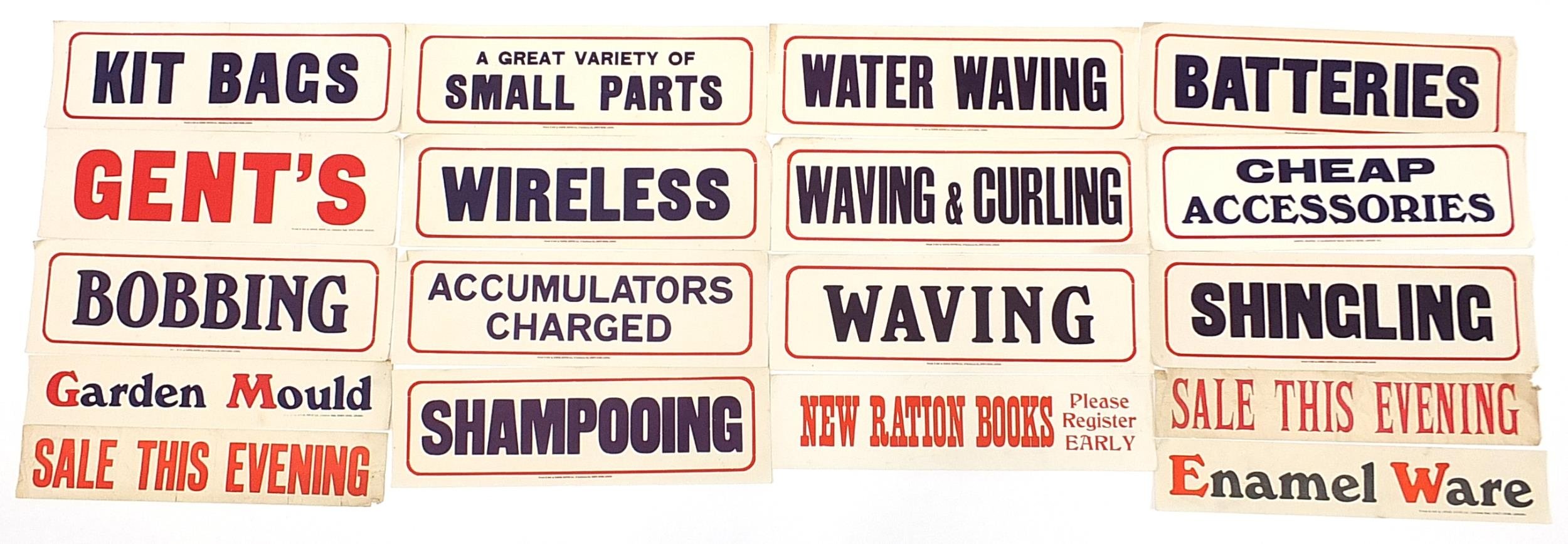18 Lithographic Shop Advertising Signs
Lithographs on thin paper
c.1945
Largest sign measures 51cm x 16cm
Printed and sold by Samuel Reeves Ltd of King's Cross London
Unframed
Including: ‘Accumulators Charged’, ‘Batteries’, ‘Cheap Accessories’, ‘Sale this Evening’ and ‘A Great Variety of Small Parts’.
Most signs are in good condition, some signs have small corners missing or minor tears – some discolouring consummate with age.
Lithographs on thin paper
c.1945
Largest sign measures 51cm x 16cm
Printed and sold by Samuel Reeves Ltd of King's Cross London
Unframed
Including: ‘Accumulators Charged’, ‘Batteries’, ‘Cheap Accessories’, ‘Sale this Evening’ and ‘A Great Variety of Small Parts’.
Most signs are in good condition, some signs have small corners missing or minor tears – some discolouring consummate with age.
Lithographs on thin paper
c.1945
Largest sign measures 51cm x 16cm
Printed and sold by Samuel Reeves Ltd of King's Cross London
Unframed
Including: ‘Accumulators Charged’, ‘Batteries’, ‘Cheap Accessories’, ‘Sale this Evening’ and ‘A Great Variety of Small Parts’.
Most signs are in good condition, some signs have small corners missing or minor tears – some discolouring consummate with age.
Pre 1870 most posters were still created using woodblocks or metal engravings – there was little colour present or mindful design implementation, instead there was a reliance on simple motifs and the typography itself to gain attention.
After 1870 this changed with the ‘three stone lithographic process’ which allowed artists to achieve every colour in the rainbow with as little as three stones - usually red, yellow and blue - printed with overlay to produce further colouration but technically difficult and expensive. After the outbreak of the First World War, most posters were printed using the mass production technique of photo offset, which resulted in the familiar dot pattern seen in newspapers and magazines. These were cheaper to produce but often also on cheap fragile paper.



